DUBAI: Just as the world thought it had turned a corner in the fight against COVID-19, hopes of a return to normality were dashed when doctors in South Africa reported that around 3,000 of their patients had contracted a new, possibly more infectious and potentially more vaccine-resistant variant of the coronavirus.
The emergence last month of B.1.1.529 — named omicron by the World Health Organization in line with its system of designating notable variants after letters of the Greek alphabet — sent governments into a frenzy just weeks before the busy Christmas and new year travel season was due to begin.
Mask-wearing, social distancing, mass testing and work-from-home rules were quickly reimposed in many countries to help contain the anticipated spread of the new variant, while governments closed their borders to travelers from nations where omicron was present.
Despite the rapid response, the variant has already gained a foothold on almost every continent and is expected to become the dominant strain, replacing the previous variant of concern known as delta.

Emmanuel Kouvousis, senior scientific adviser at Vesta Care, believes the coronavirus will continue to enjoy the upper hand as long as countries lack a united plan of action to achieve a higher global rate of vaccination.
“If I can make a prediction, I would say the virus will stay around for at least five years from the day it started,” Kouvousis told Arab News, adding that omicron is unlikely to be the last COVID-19 mutation, with at least two more dominant strains expected before the pandemic is truly over.
By Dec. 1, the number of people infected by omicron in South Africa had more than doubled to 8,561. At least 11 EU countries have since reported cases of omicron, while health officials in the UK expect to see as many as 1 million cases by the end of the year.
Among the Gulf Cooperation Countries, Saudi Arabia, the UAE, Bahrain, Kuwait and Oman have all reported their first cases of omicron. Israel, Japan and Morocco have closed their borders entirely to foreign travelers.
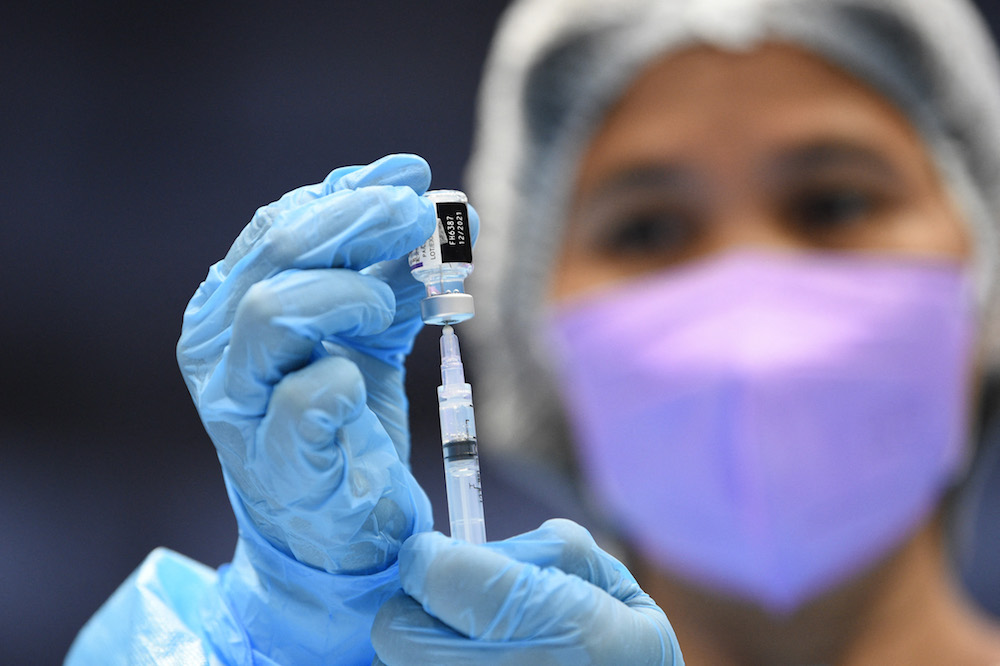
A medical worker prepares a BioNtech-Pfizer COVID-19 coronavirus vaccine in Makati City, suburban Manila on November 29, 2021. (AFP/File Photo)
Part of the problem, according to Konstantinos Dimitrakopoulos, director and head of the medical division at Intelligent Care Group, is that many people are misinformed about the effect of vaccines and are under the false impression they are completely immune once jabbed.
“The vaccine does not stop you from getting the virus. It doesn’t stop you from contracting it. It doesn’t stop you from spreading it. It simply diminishes your chance of dying or having severe symptoms,” he told Arab News.
“For the vaccine to be the ultimate tool, we would have to press a button and instantly vaccinate billions of people at once” — which is, of course, impossible.
Another issue is the “massive time lags” between populations receiving the first and second doses of the vaccine, which naturally weakens the fight against a rapidly mutating virus.
“The global community went from understanding the virus, to screening the virus, to developing the vaccines, then vaccinating the people with a time lag, which is a natural lag due to production restrictions,” said Dimitrakopoulos.
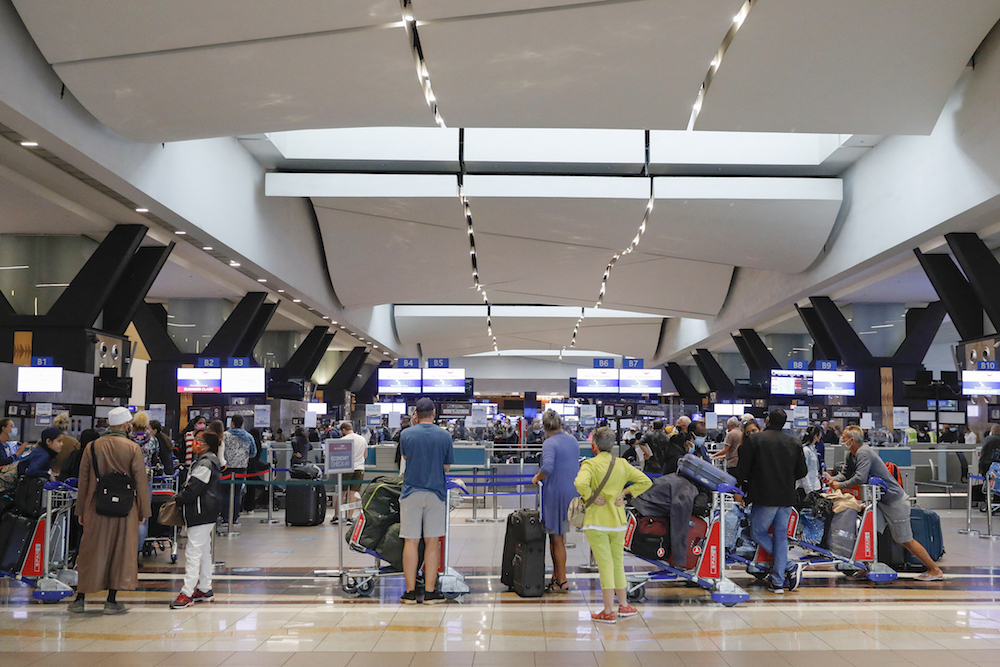
Travelers queue at a check-in counter at OR Tambo International Airport in Johannesburg on November 27, 2021, after several countries banned flights from South Africa following the discovery of the Omicron variant. (AFP)
The large disparity in resources and financial capabilities between countries across the globe is one of several factors that have hindered efforts to beat the virus before it could mutate yet again.
After all, despite the administration of more than 8.4 billion vaccine doses worldwide as of early December, an average of just 7.1 percent of people in low-income countries have received at least one jab.
“We do not have factories globally that can produce the vaccines on such a scale, or distribute and administer them simultaneously in a very short window of time,” said Dimitrakopoulos.
However, simply sending more vaccines to poorer countries in Africa and Asia in the hope of increasing the rate of vaccination is unlikely to solve the problem.
“There’s always that question of who will run the last mile and take the vaccines to every single village or area and administer them,” said Dimitrakopoulos.
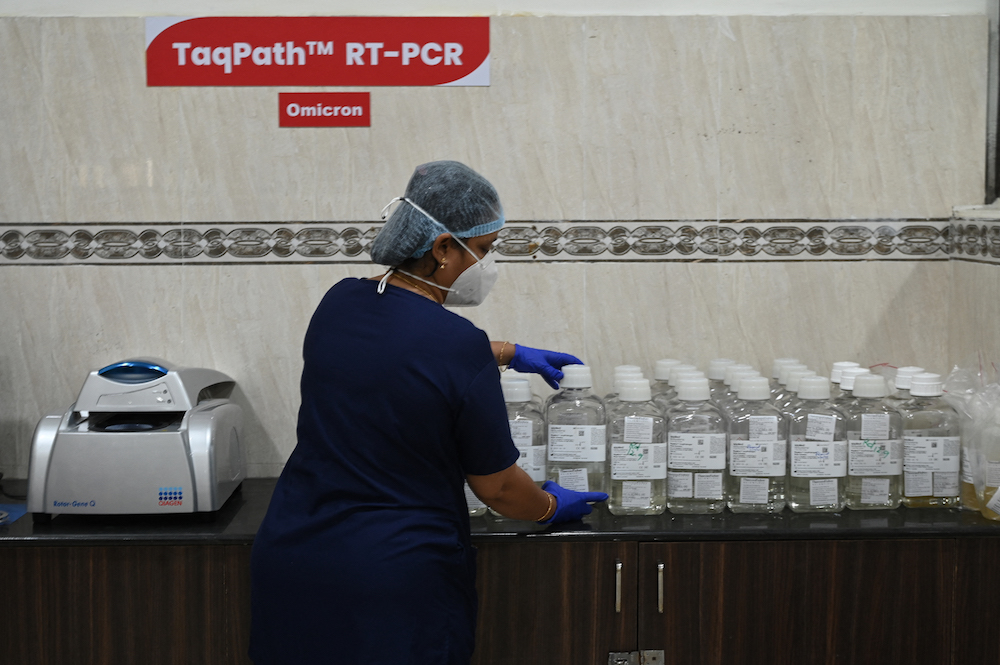
A lab technician works inside a pathological lab equipped to screen COVID-19 patients and those infected with the Omicron variant arriving from high-risk destinations at a government hospital in Chennai. (AFP)
Another factor is the interconnectedness of the world and lack of a uniform global policy for screening the virus. “As long as airports are open, the virus has unlimited ways to spread,” Dimitrakopoulos added.
Indeed, most of the world’s population is not sufficiently covered by a healthcare system that follows strict screening procedures, responds rapidly to cases by enforcing self-isolation, and provides treatments and vaccinations against the virus.
Distribution is not only being hampered by logistical challenges in the developing world. The monopolization of vaccines as intellectual property by a handful of big pharmaceutical firms has also limited production, according to Kouvousis.
Smaller “generic companies” do not have access to the vaccine’s recipe and, as a result, are unable to boost production or expand its reach in poorer countries, he said.
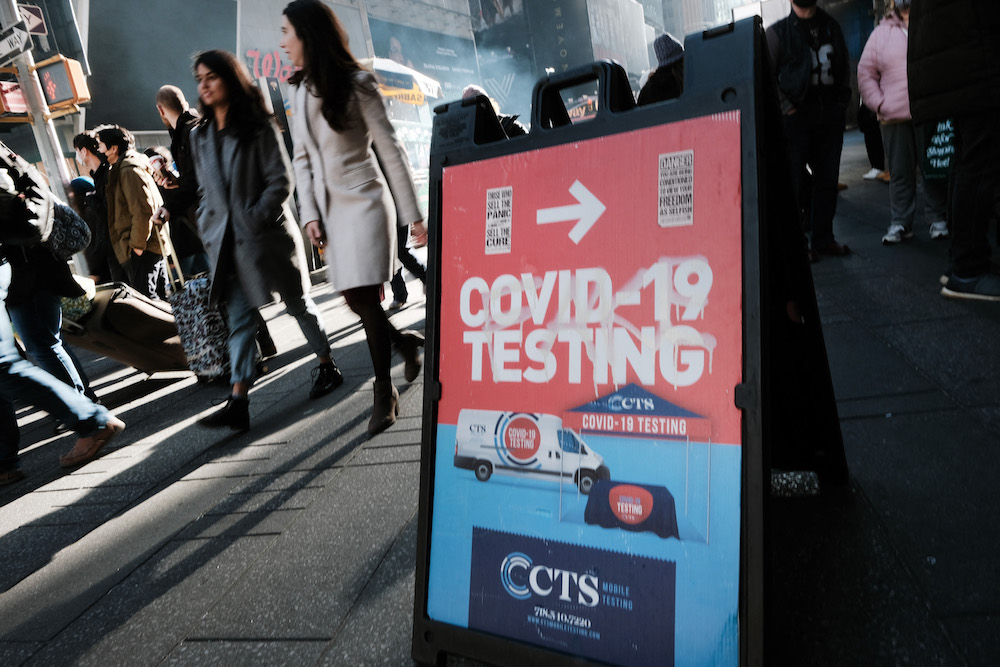
With the newly discovered Omicron strain of COVID-19, health officials globally are urging people to get a vaccination or a booster and get tested for the virus. (AFP)
One of the most concerning factors is the widespread public skepticism surrounding vaccinations. Misinformation or a lack of education has meant that large segments of the population neglect social distancing and hygiene measures or outright object to receiving a vaccine.
These factors combined have allowed the virus to slip through the cracks once more. “There was a delay in putting the message out there on a global scale,” said Kouvousis.
“We lost momentum because of that arrogance as a medical community who didn’t fear anything and thought they could handle everything,” said Kouvousis. “The numbers are now saying something else.”
According to the Johns Hopkins University Coronavirus Resource Center, the COVID-19 death toll has now surpassed 5.3 million worldwide.
Dimitrakopoulos agrees the world has become complacent, and that more could have been done before and during the pandemic to better prepare for the initial outbreak and the rise of new variants.
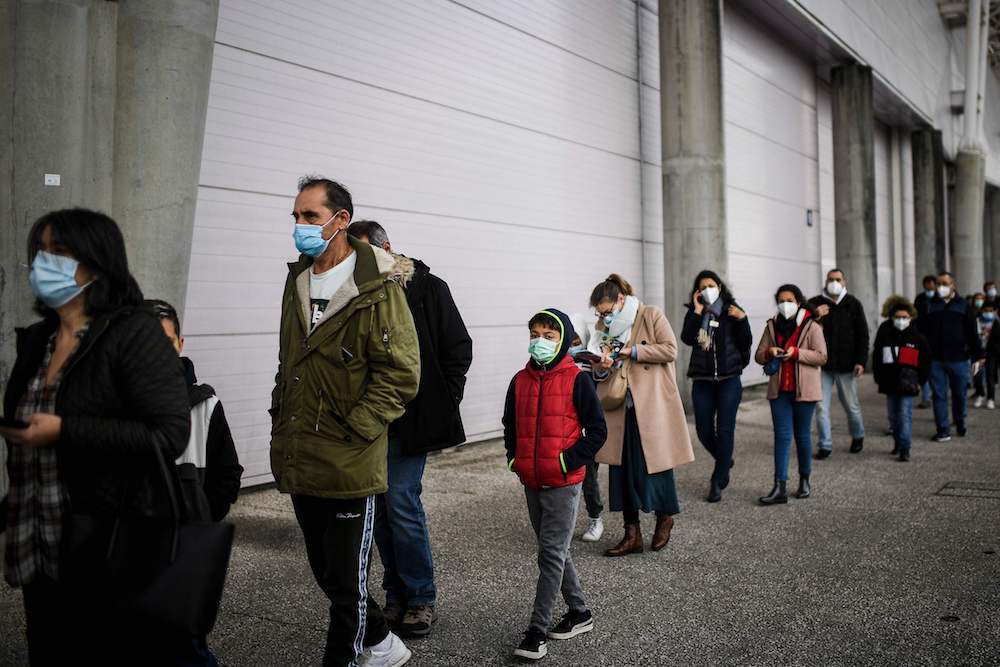
Children accompanied by their parents wait in line as they arrive to receive a dose of COVID-19 vaccine, outside of the vaccination centre of Parque das Nacoes in Lisbon on December 18, 2021. (AFP)
“Our emergency plans have never been tested,” he said. “The first time that they were supposed to be tested, they proved inefficient; everything was made ad hoc and on the spot as the pandemic was developing.”
Some countries were better prepared when the pandemic hit, while others have adapted well to contain new variants as they have emerged.
One example of a success story is the UAE, where 100 percent of the population has received its first dose of the vaccine, and over 90 percent are now fully vaccinated.
“When the virus hit (in February 2020), the daily capacity of the UAE market to perform PCR tests was about 5,000 samples,” said Dimitrakopoulos. Today, the UAE has the capacity to run more than half a million tests per day, process samples and track the source of the virus.
The omicron variant has nevertheless left scientists scrambling to determine its transmissibility and lethality.
“The data takes time to gather and analyze, but we should have a better idea by the end of December whether omicron is as transmissible or more highly transmissible than the delta variant,” Dr. Matthew Binnicker, director of clinical virology at Mayo Clinic in Rochester, told Arab News.
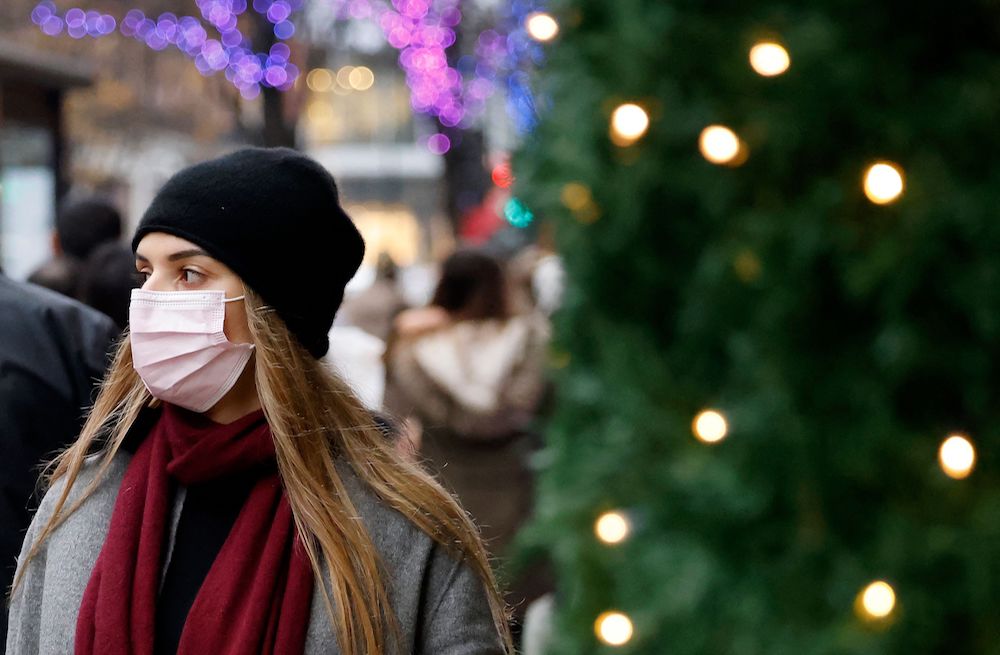
Shoppers, some wearing face coverings to combat the spread of the virus, walks past stores on Oxford Street in London on December 18, 2021. (AFP)
According to the WHO, “a new variant doesn’t mean that things will necessarily be worse, but it does mean that they will be more uncertain.”
Binnicker added: “The best way to prevent mutations from arising is to reduce the number of people being infected. If the virus can’t infect someone, it doesn’t have the opportunity to replicate its genome and this prevents mutations from occurring.”
Preliminary studies show that a third dose of a vaccine, known as a booster, increases neutralizing antibody levels 25-fold compared with two doses, which alone provide at least 70 percent protection against the omicron variant.
“In order to significantly reduce the number of infections, we’ll likely need a global immunity rate (from vaccination and/or natural immunity) of at least 80 percent,” said Binnicker. “The faster we can vaccinate the global population, the faster we can drive down the rate of infections and prevent new variants from emerging.”
To make this a reality, many in the medical community are coming around to the idea of mandatory vaccinations — an idea that could well prove politically unpopular. For this reason, Dimitrakopoulos would like the decision taken out of the hands of politicians.
“In order to tackle the global political issue around mandatory vaccinations, a directive should come from the health authorities such as the WHO and the CDC (US Centers for Disease Control and Prevention),” he said. “Not the governments, not the politicians.”
















